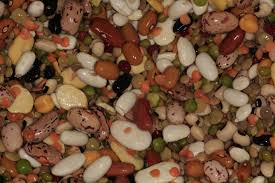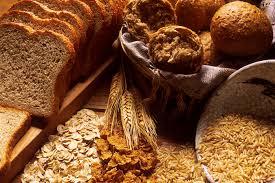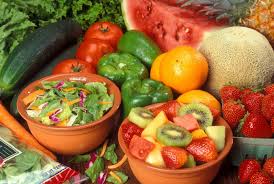Carbs are one of the most controversial items in the nutrition world. Some so-called diet gurus preach a diet high in carbs, while others say that we should avoid carbs like the plague.
To add to the confusion, studies have shown that people can lose weight on both high-carb and low-carb diets.
With all this conflicting information, what are normal people like me and you to think about this?
As with many things, the answer lies in moderation.
In general, we can’t completely cut carbs. They are one of three main macronutrients, and one of the main power sources for our bodies.
But we can make better choices, that
won’t leave us starving, but can help us take inches off of our waistlines.
AVOID – Sugar

The dreaded s-word.
This one is a killer for me.
Because I have a serious sweet tooth.
But more and more evidence is coming out demonstrating how REALLY TERRIBLE sugar is for our bodies.
The main reason is because it spikes our blood sugar.
Leading our bodies to release insulin.
And making us crash.
If this process goes on long enough, our bodies become resistant to the insulin.
In the extreme, this can lead to Diabetes.
But less extreme, it can sap our energy, and add to our waistlines.
There’s even evidence that eating https://www.scientificamerican.com/article/mental-health-may-depend-on-creatures-in-the-gut/sugar makes us dumber.
So, when it comes to avoiding sugar, do the best you can.
Save sweet treats for special occasions, and practice portion control.
And don’t rely on artificial sweeteners as these have been proven to increase sugar cravings in some individuals.
Also, watch out for hidden sugar in your foods.
On an ingredient list, sugar can masquerade as high fructose corn syrup, sugar alcohol, sucrose, dextrose and lactose.
 DO EAT – Beans & Nuts
DO EAT – Beans & Nuts
Most Westernized diet lack enough fiber.
The American Dietetic Association recommends 25-35 grams daily, but the American Heart Association estimates that the typical American eats only 15 grams of fiber each day.
This is bad, because fiber is excellent for your health for several reasons.
It keeps you regular.
It prevents blood sugar spikes.
And it keeps you digestive system in good shape.
Also, nuts can be rich sources of antioxidants.
Adding beans and nuts can give you not only a good source of fiber energy, but also a good source of energy that won’t spike your blood sugar and give you the sugar crash.
AVOID – White Flour
I’m probably like you.
I love bread.
But white bread can be terrible for you.
Just like sugar, simple carbohydrates like white flour are quickly processed by your body, leading to rapid rises and falls in your energy level.
Worse, highly refined flour products have little to no fiber, or other vitamins that our bodies need.
Meaning that all of those calories are empty.
So, cut the white bread

DO EAT – Whole Grains
Whole grain and whole wheat breads aren’t perfect.
But they are MUCH better than white breads.
Unlike white breads, whole grains contain more fiber, vitamins and minerals that our bodies crave.
Whole grains are also much less likely to cause blood sugar peaks and valleys, because our bodies work longer and harder to digest whole grain foods and convert them into energy, thus you avoid the quick peaks and crashes you get from refined carbohydrates.
High-fiber whole grains also tend to satisfy your hunger for longer periods of time, helping you avoid between-meal cravings.
So, switch the white for the whole grain.
AVOID – Fruit Juice
Fruit juices are high in sugar and calories, but low in fiber.
Do you see a pattern yet?
Simple sugars are bad.
And we can make better choices going for more complex carbs.
So, it’s much healthier to eat the whole fruit than to drink only its juice.
Plus, many juices are made from concentrate – another misleading term for added sugar.
After you exercise, try rehydrating with a bottle of water and a piece of fruit.
This will give your muscles the quick energy they need to recover with the added bonus of fiber.

DO EAT – Fruits & Vegetables
As opposed to fruit juice, which is often filled with added sugar, and stripped of important nutrients like fiber, fruits and vegetables are some of the healthiest foods you can eat.
Not only are they nutrient-dense, but they also contain a significant amount of fiber and water.
In fact, the United States Department of Agriculture recommends 2-4 servings of fruit and 3-5 servings of vegetables each day.
The Center for Disease Control also reports that diets rich in fruits and vegetables can help prevent diabetes, cancer and other diseases.
Try to incorporate a variety of colorful vegetables into your diet.
Those colors often mean different nutrients.
If you’re concerned about eating too much fructose, the natural sugar in fruits, stick to the lower-sugar options such as berries, cherries, apricots, grapefruit and apples.
Avoid – Alcohol
The advice on alcohol is all over the place.
The French drink plenty of wine, and they live to 105, right?
Unfortunately, the science, and common sense, point in one direction.
Alcohol is bad for your health.
Unlike food, alcohol is quickly absorbed by the body, passed through the liver, and distributed into the bloodstream.
So, alcohol spikes our blood sugar, just like other simple sugars.
Alcohol is full of calories that don’t benefit your body.
And, according to the National Institute on Alcohol Abuse and Alcoholism, alcohol can also hinder your body’s ability to absorb nutrients and leave you dehydrated.
If you are going to have a drink or two, make sure you avoid the sugary mixed drinks and wine coolers.
Opt instead for a diet-friendlier white wine spritzer, a lite beer, or a two-ingredient cocktail with ginger ale or soda water.
Also, try not to overindulge; alcohol is notorious for lowering inhibitions and will make it harder to say no to unhealthy food choices.
Another way to really help your health is to get the baseline of vitamins and minerals that you need every day.
And LiquiVive® Liquid Vitamins provide that.
LiquiVive® Liquid Vitamins contains over 170 total nutrients, in one easy to swallow form.
That means that you can take one fluid ounce of LiquiVive® Liquid Vitamins.
Instead of having to swallow a quarter of a bottle of multi-vitamin horse pills.
And, unlike most supplements which are synthetic, LiquiVive® Liquid Vitamins comes from an all-natural 100% vegetarian whole food plant source.
It tastes fantastic, and because of its liquid form, is much easier to take than pills.
Thanks again!!
Marc
